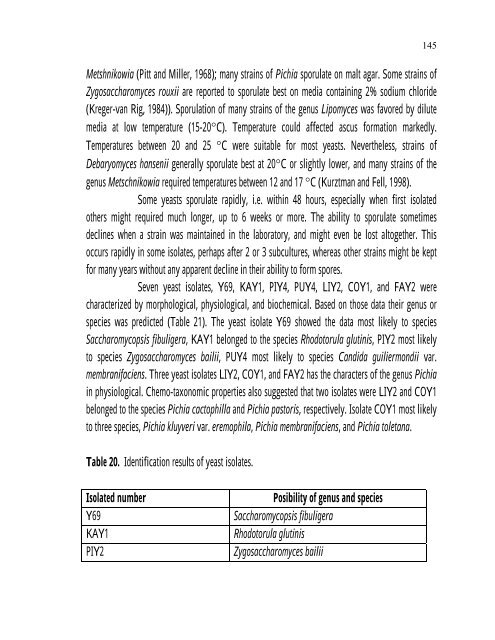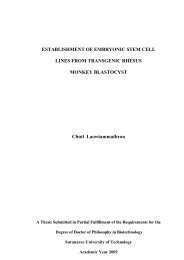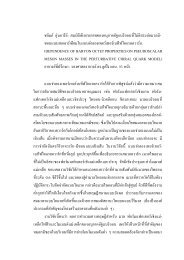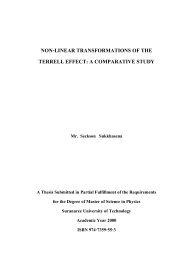PRODUCTION Of NUTRIENT SOURCES FOR RHIZOBIUM
PRODUCTION Of NUTRIENT SOURCES FOR RHIZOBIUM
PRODUCTION Of NUTRIENT SOURCES FOR RHIZOBIUM
Create successful ePaper yourself
Turn your PDF publications into a flip-book with our unique Google optimized e-Paper software.
���<br />
Metshnikowia (Pitt and Miller, 1968); many strains of Pichia sporulate on malt agar. Some strains of<br />
Zygosaccharomyces rouxii are reported to sporulate best on media containing 2% sodium chloride<br />
(Kreger-van Rig, 1984)). Sporulation of many strains of the genus Lipomyces was favored by dilute<br />
media at low temperature (15-20°C). Temperature could affected ascus formation markedly.<br />
Temperatures between 20 and 25 °C were suitable for most yeasts. Nevertheless, strains of<br />
Debaryomyces hansenii generally sporulate best at 20°C or slightly lower, and many strains of the<br />
genus Metschnikowia required temperatures between 12 and 17 °C (Kurztman and Fell, 1998).<br />
Some yeasts sporulate rapidly, i.e. within 48 hours, especially when first isolated<br />
others might required much longer, up to 6 weeks or more. The ability to sporulate sometimes<br />
declines when a strain was maintained in the laboratory, and might even be lost altogether. This<br />
occurs rapidly in some isolates, perhaps after 2 or 3 subcultures, whereas other strains might be kept<br />
for many years without any apparent decline in their ability to form spores.<br />
Seven yeast isolates, Y69, KAY1, PIY4, PUY4, LIY2, COY1, and FAY2 were<br />
characterized by morphological, physiological, and biochemical. Based on those data their genus or<br />
species was predicted (Table 21). The yeast isolate Y69 showed the data most likely to species<br />
Saccharomycopsis fibuligera, KAY1 belonged to the species Rhodotorula glutinis, PIY2 most likely<br />
to species Zygosaccharomyces bailii, PUY4 most likely to species Candida guiliermondii var.<br />
membranifaciens. Three yeast isolates LIY2, COY1, and FAY2 has the characters of the genus Pichia<br />
in physiological. Chemo-taxonomic properties also suggested that two isolates were LIY2 and COY1<br />
belonged to the species Pichia cactophilla and Pichia pastoris, respectively. Isolate COY1 most likely<br />
to three species, Pichia kluyveri var. eremophila, Pichia membranifaciens, and Pichia toletana.<br />
Table 20. Identification results of yeast isolates.<br />
Isolated number Posibility of genus and species<br />
Y69 Saccharomycopsis fibuligera<br />
KAY1 Rhodotorula glutinis<br />
PIY2 Zygosaccharomyces bailii






